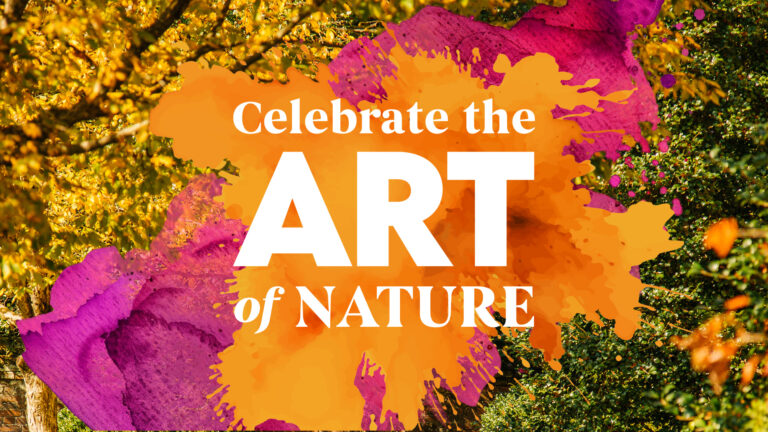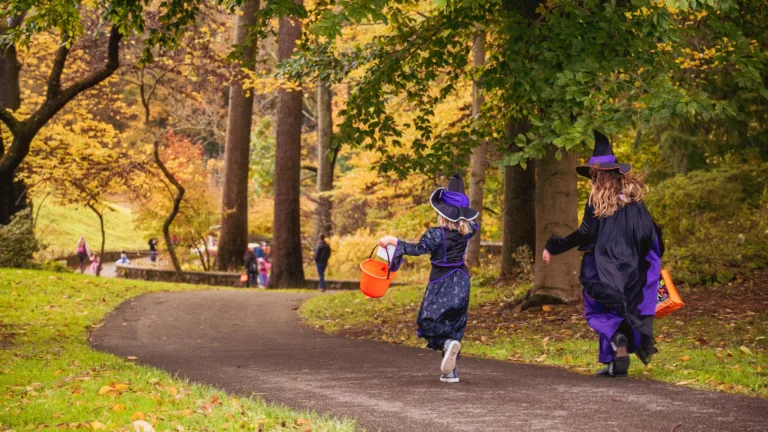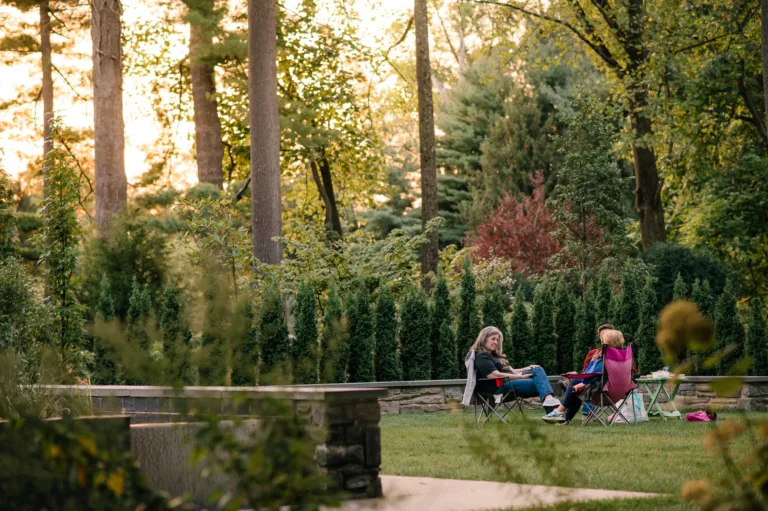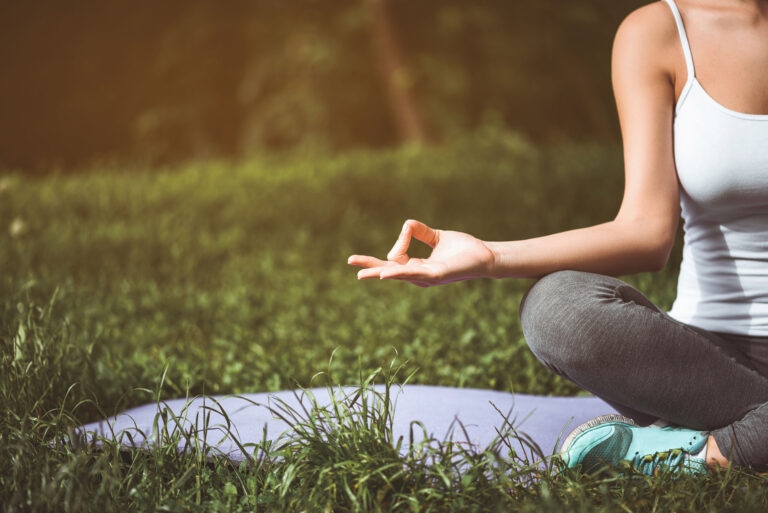Philadelphia is a city of fascinating history, incredible diversity, and phenomenal public horticulture. The urban parks system is one of the oldest and largest in the country, encompassing more than 10,000 city acres and comprising such gems as the country’s oldest botanical garden, first zoo, and largest landscaped urban park. The following guide to visiting West Philadelphia Gardens offers a full day of activities centered around this lush and historic neighborhood. These landmarks are easily walkable or transit-accessible from Center City and the suburbs.
Stop 1: The Woodlands
4000 Woodland Avenue, Philadelphia, Pennsylvania
Open year round from dawn to dusk, free admission. Visit woodlandsphila.org for more information.
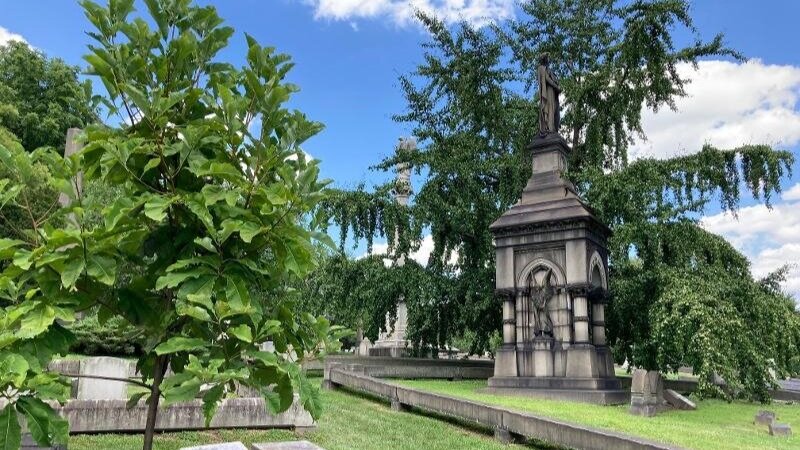
Enter The Woodlands gates to find tranquility and beauty unlike any other within Philadelphia city limits. The Woodlands’ 54-acre undulating landscape is altogether a one-of-a-kind 18th-century English pleasure garden, 19th-century rural cemetery, and a modern green oasis. Once the 600 acre estate of William Hamilton, today this West Philadelphia site features the historic Hamilton Mansion and Stable, more than 150 Grave Gardens, and 700+ trees including a number of State Champions. Don’t miss the State Champion Caucasian Zelkova (Zelkova carpinifolia) near the mansion. It is an exceptional specimen of an unusual tree species.
As you wander the meandering roads and brick paths, look for Grave Gardens scattered throughout the grounds. These Victorian Era container gardens, called “cradle graves,” were a popular style of headstone in the 19th Century. Before public parks existed, people would spend time in cemeteries like The Woodlands, picnicking, gardening, visiting loved ones, and enjoying time outdoors among trees. Today, these cradle graves are adopted by volunteers called Grave Gardeners, and are lovingly planted with Victorian Era plants and cared for throughout the year. The Grave Gardener program is nationally recognized by gardeners and non-gardeners alike.
➔ The Stable restrooms are open when staff are on-site, during Office Hours, and during public events.
➔ There is no café at The Woodlands, but visitors are welcome to pack a lunch and picnic on the grounds.
➔ If you’re looking for lunch before the next stop, consider Clarkville for pizza, Loco Pez for tacos, or a leisurely Ethiopian lunch at Abyssinia
Stop 2: Bartram’s Garden – America’s First Botanical Garden
5400 Lindbergh Blvd., Philadelphia, Pennsylvania
Open year round from dawn to dusk, free admission. Visit bartramsgarden.org to plan your visit.

Situated in historic Lenape territory on the banks of the Lower Schuylkill River, Bartram’s Garden is a 45-acre botanical garden, National Historic Landmark, and public park. It was established in 1728 by American botanist John Bartram, who spent his life traversing eastern North America documenting and collecting native plants.
Begin your visit at the Welcome Center (open 9:30am-4:30pm, April-December) to pick up a map of the site.
Make your way to the original Bartram house, which sits at the top of the garden, overseeing the historic kitchen garden to the west and the newly reinstated Anne Bartram Carr Garden to the east. Continuing on to the kitchen garden, you can find a Franklinia tree—a species found by John Bartram during an expedition in Georgia and named after Bartram’s close friend, Benjamin Franklin. Franklinia were last seen in the wild in the early 1800s and all Franklinia today are descended from those specimens collected and cultivated by the Bartrams in Philadelphia. Batram’s Garden is also home to the oldest living ginkgo tree in North America and the country’s oldest living yellowwood tree.
Be sure to stop at the greater naturalistic garden, where you can find a wide variety of native North American plants, including a bog garden and planted pond.
Finish out your visit on the boardwalk path which will take you along the banks for the Schuylkill River. To the north, follow the meadow path to the Community Boat House (free community boating in warmer months on Saturdays), and to the south you can visit the orchard, Sankofa Community Farm, and 56th Street Pier and Bandstand.
➔ Restrooms are available at the Bartram House and by the Welcome Center during the April-Dec visitation season.
➔ Snacks are available at the Welcome Center.
Additional Recommendations Nearby
➔ Cool off with a beverage from Carbon Copy (701 S. 50th St). This is some of the best beer and pizza around. Made in an old converted fire station, this brewery operation has too many good beers to choose!
➔ West Philadelphia food scene: Baltimore Avenue is home to a ton of great restaurants. Favorites include:
- Dahlak or Gojjo (Ethiopian)
- Aksum (Mediterranean)
- Fu Wah for banh mi
- Saad’s (Middle Eastern)
- Manakeesh for Lebanese flat bread
- Ice Cave for shaved ice and popsicles
- Local 44 for elevated pub fare
- Vientiane Cafe for Laotian-Thai
- Desi Village for Indian
➔ If you have even more time, explore Fairmount Park. This sprawling urban park dates back to the early 1800s and comprises thousands of acres, but there is a remarkable density of exciting things to do and see in the western part of the park.
Visit the Horticultural Center, a tropical greenhouse once home to the largest glass conservatory of its time. Make a stop at Shofuso, a historical Japanese teahouse and traditional garden. Scramble up to Belmont Plateau, home of the best view of the city from within the city and end with a dip in Kelly Pool, a free public pool surrounded by grass and trees. Lastly, if exploring with little ones, be sure to check out the Please Touch Museum for hands-on fun.

